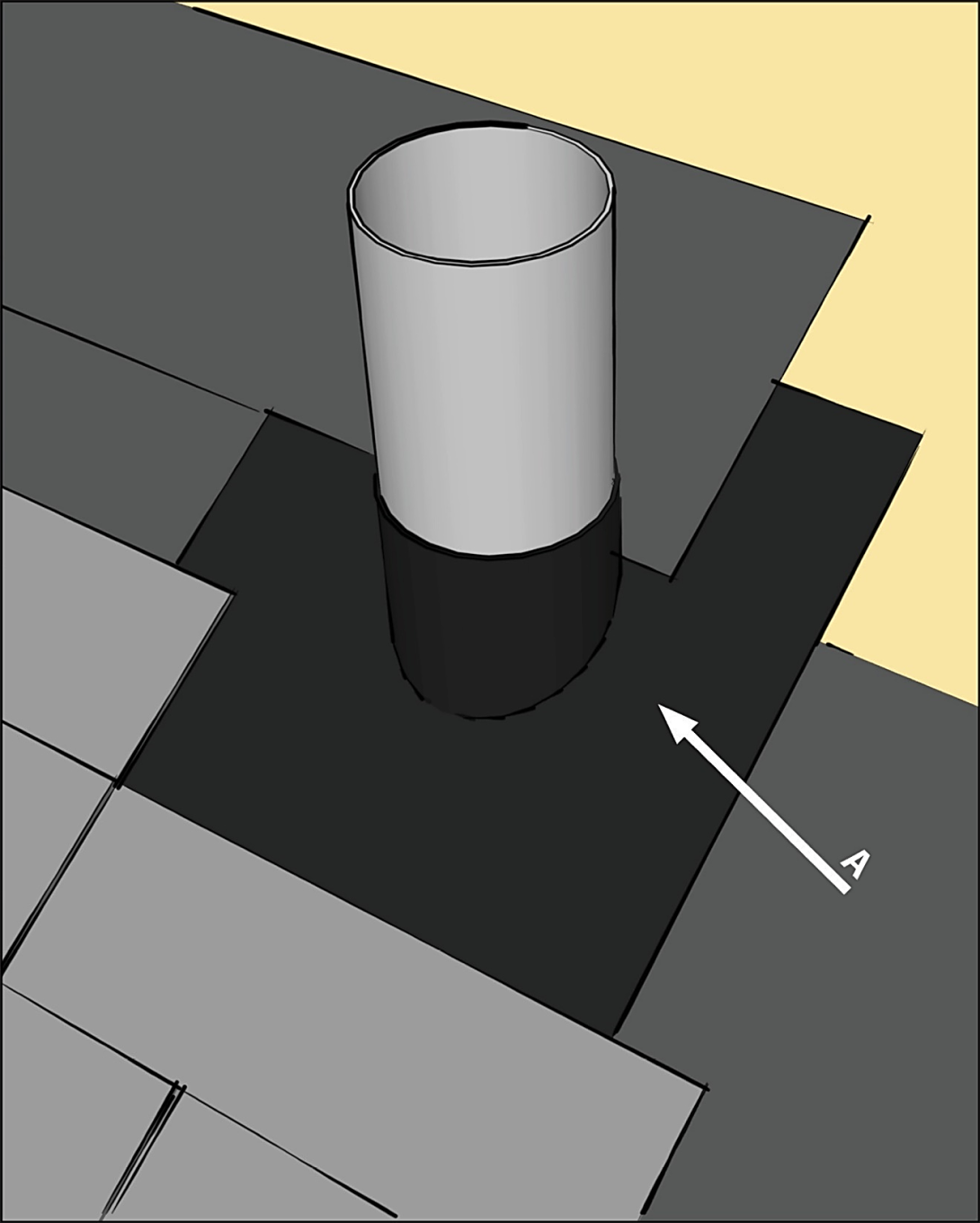
Roofing
Sealing Penetrations
Sealing around penetrations such as stovepipes, vents, dormer windows, and chimneys can help prevent water from infiltrating these vulnerable areas. Sealing is accomplished by installing metal flashing and/or a self-sealing membrane such as a bituminous peel-and-stick material that is integrated with the roofing underlayment.
The roof is the house's primary defense against water intrusion from rain, snow, and ice. It must be designed and constructed to shed water effectively through all seasons, including extreme weather events. Water that leaks into the house through the roof can quickly damage insulation, create conditions for mold growth and pest invasion, and even lead to structural rot. Penetrations are among the most vulnerable areas for water intrusion.
The underlayment (roofing felt) should be installed up to the penetration, starting on the downslope side. Next, the self-sealing membrane should be cut so that it fits around the lower half of the penetration and extends at least six inches, lapping over the roofing felt. A second piece of membrane should be cut to fit around the upper side of the pipe. It should be installed so that it seals tightly around the pipe and overlaps the top edge of the first piece of membrane.